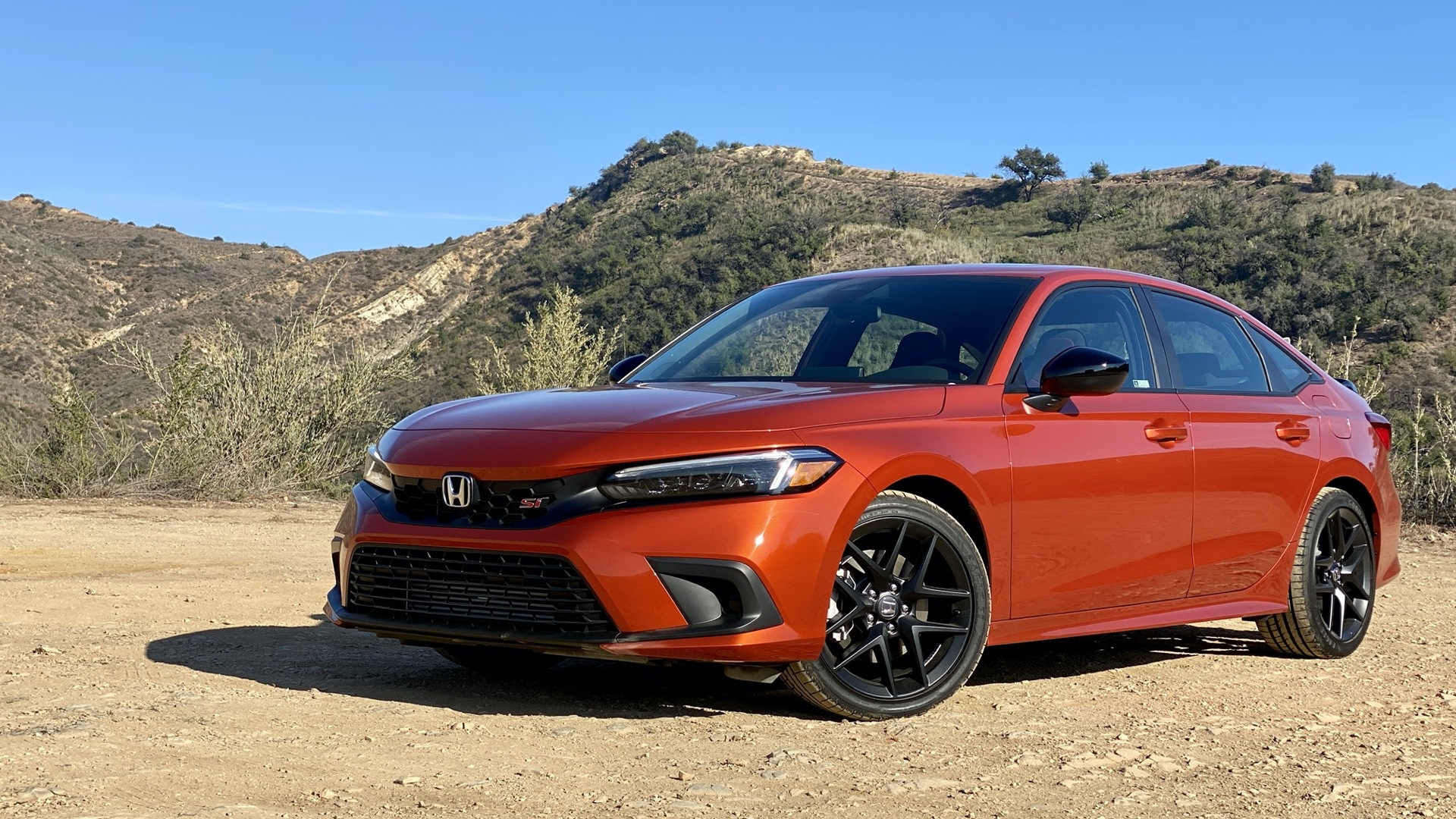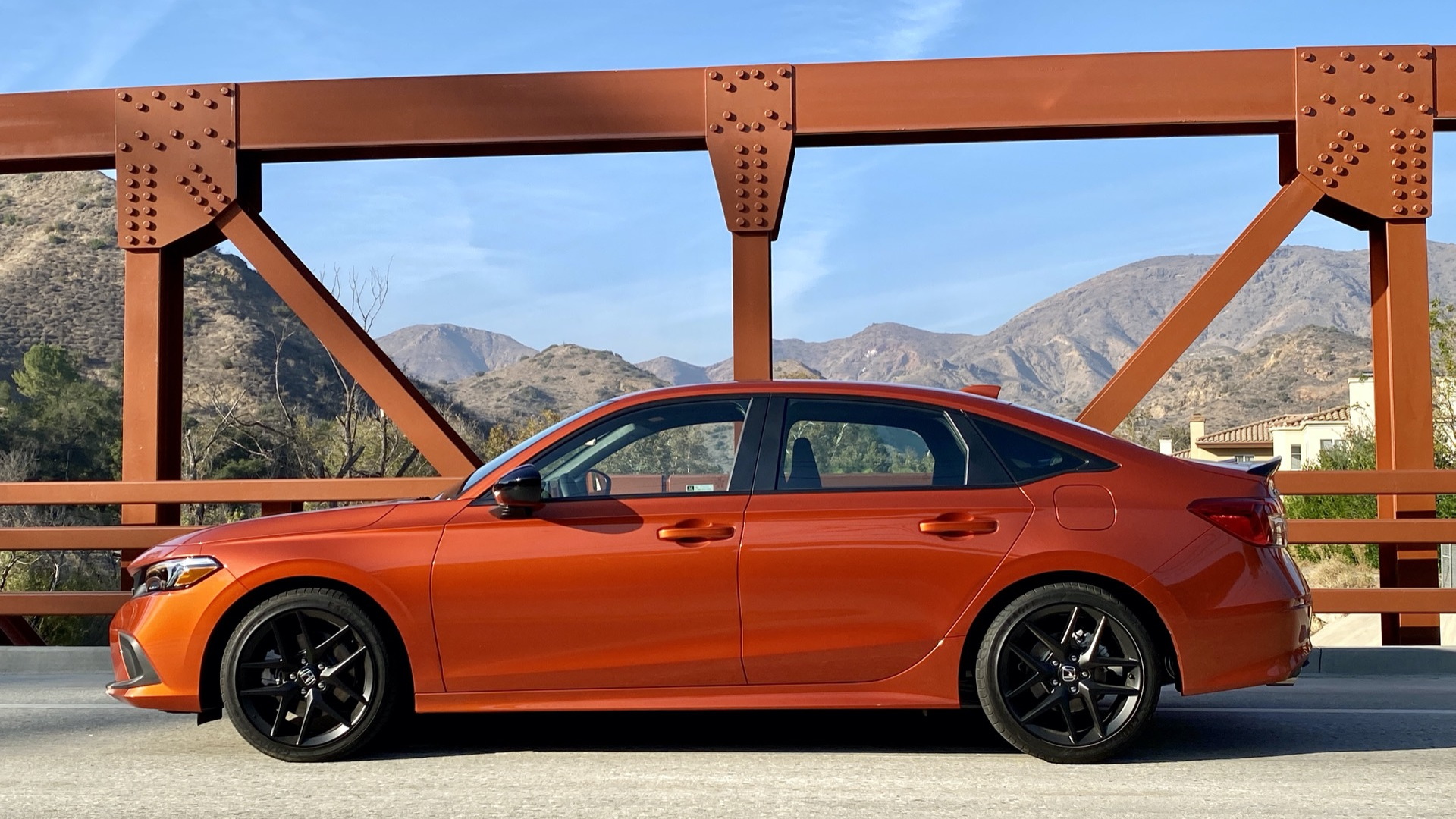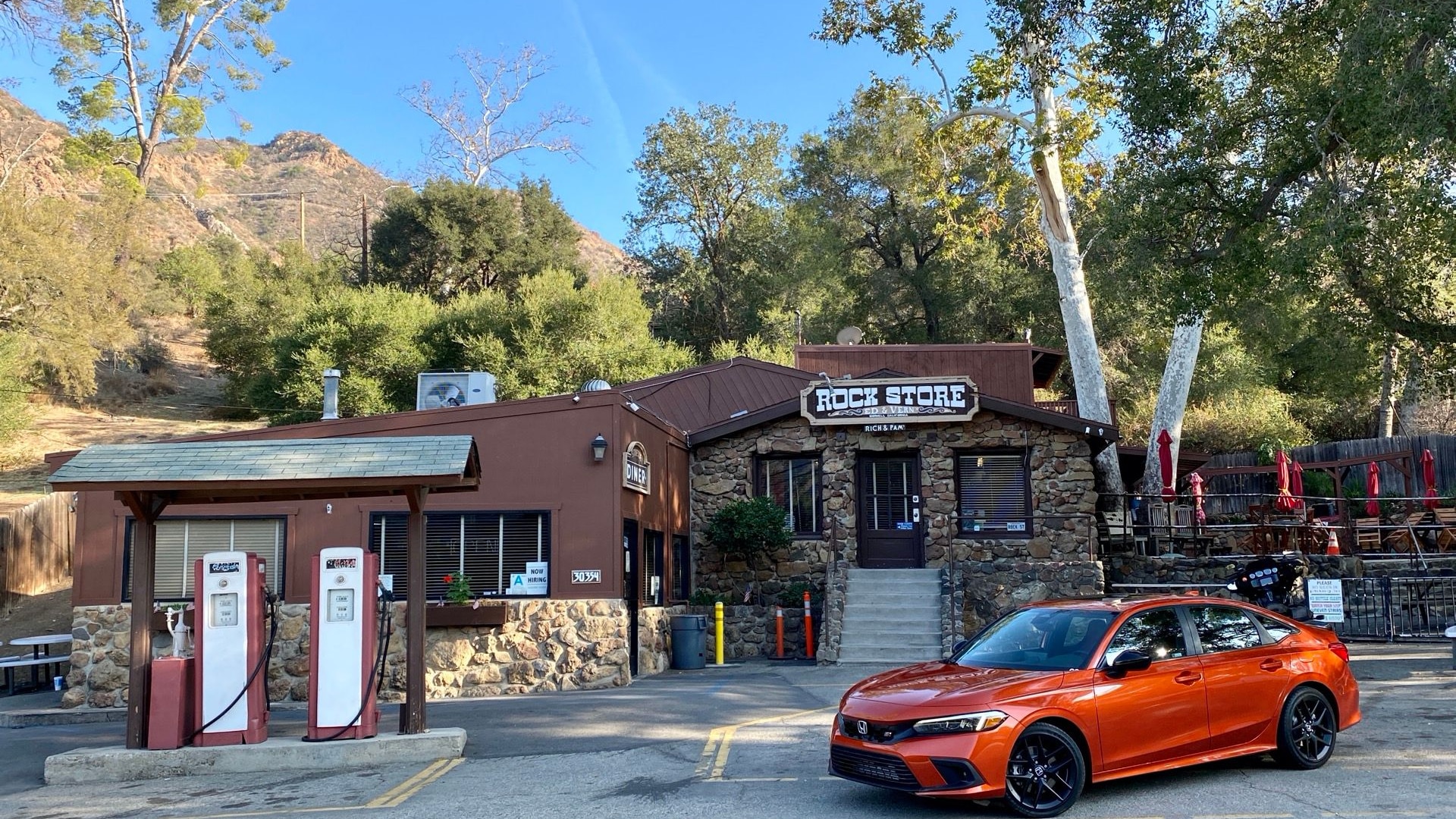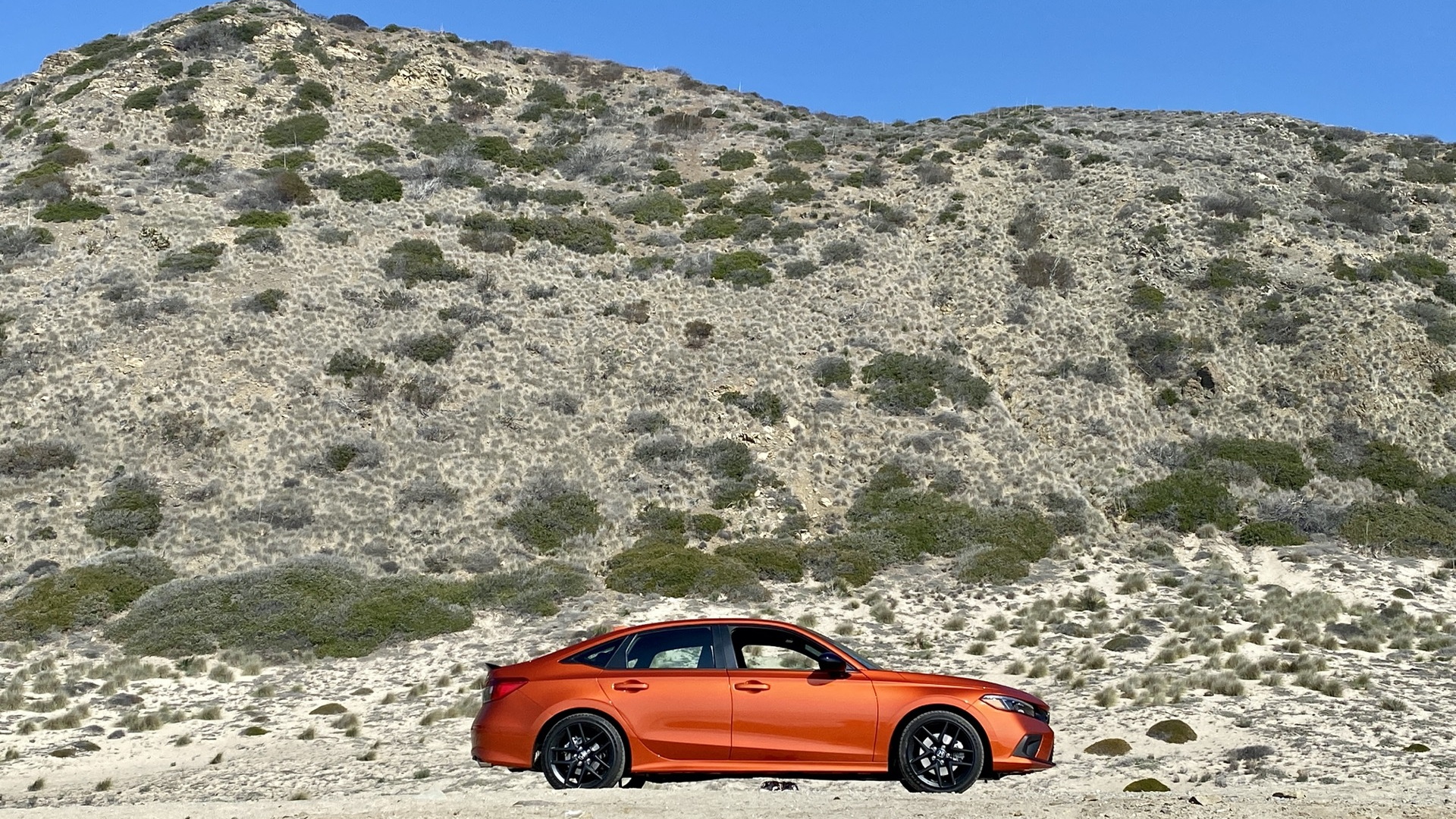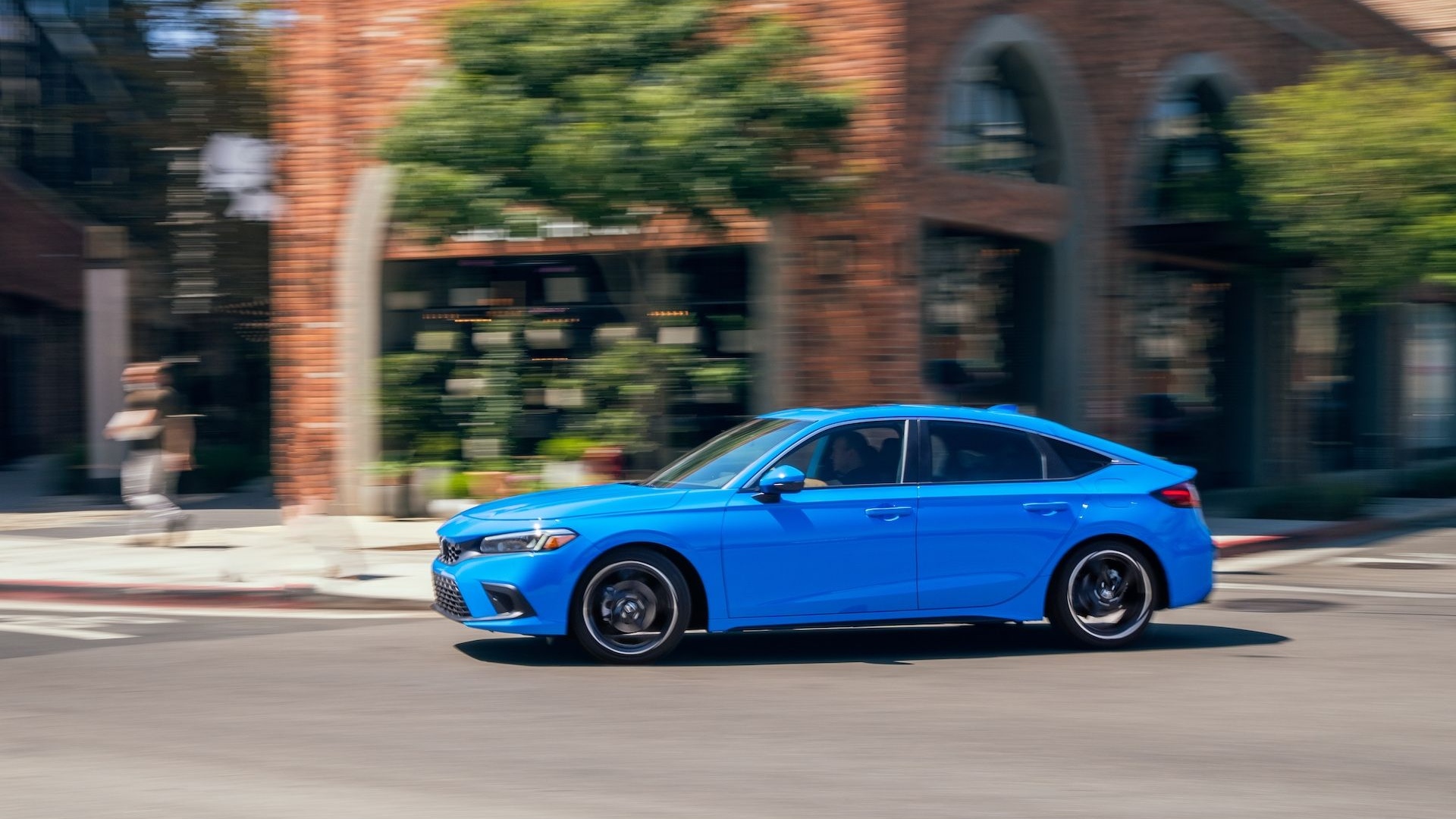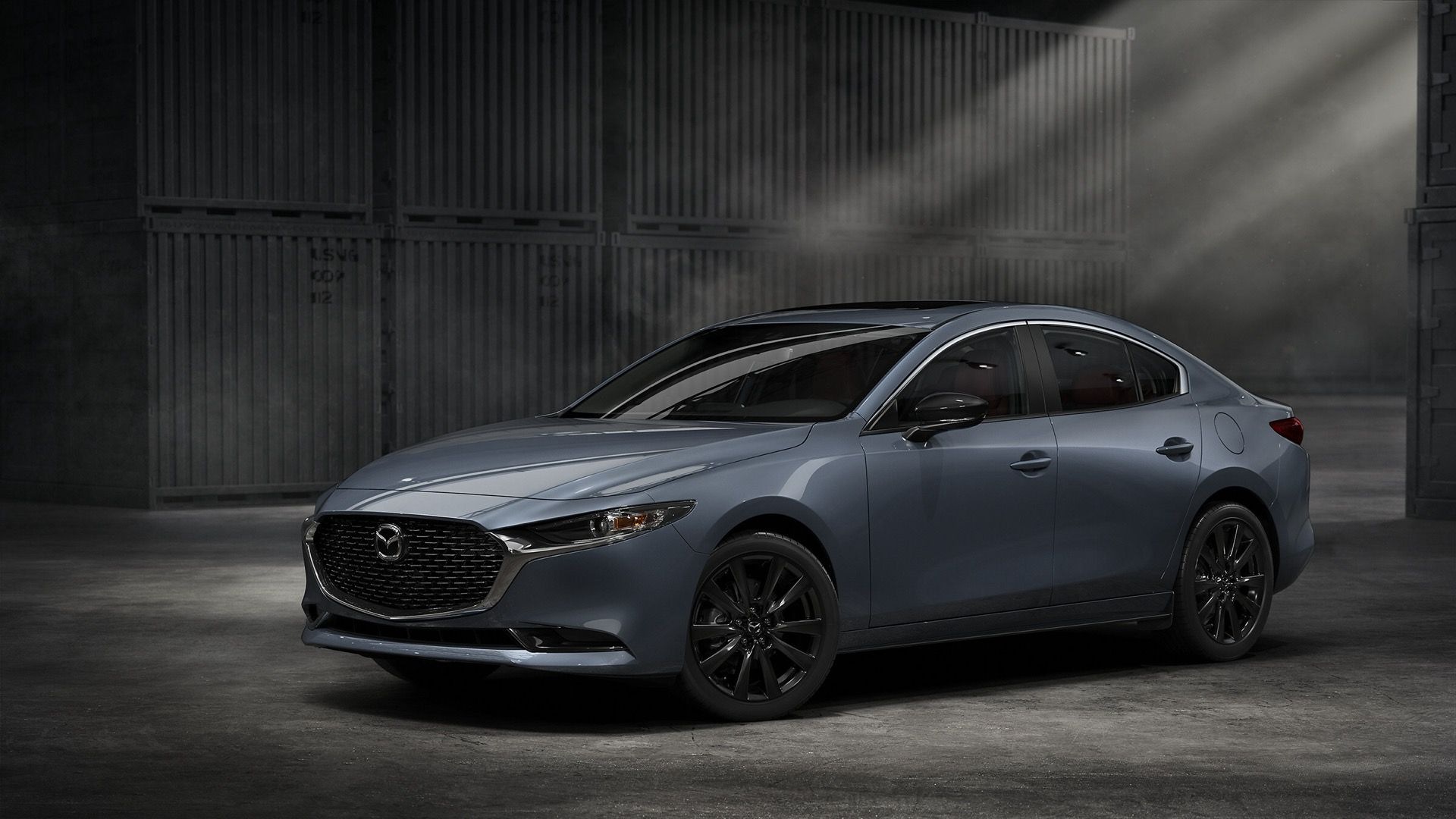The redesigned 2022 Honda Civic Si proves that you don’t need to be rich or have access to a racetrack to have fun behind the wheel. Honda skipped racetrack demos for the media preview of the latest generation Civic Si sedan and we’re better for it. Leaving town and twisting through canyons provided the kind of everyday satisfaction promised by one of the best affordable sports cars around.
Climbing single lane mountain roads while tiptoeing beside 1,000-foot drop offs, the Civic Si benefitted from improvements made to the 2022 Honda Civic. The structure of the eleventh-generation sedan (also sold as a hatch) has 8% more torsional rigidity, according to Honda. The latest Si also borrows a few tricks from the Type R, such as standard rev matching for its 6-speed manual transmission, and stiffer suspension arms and bushings.
The body seems longer and lower, and in Blazing Orange it looks a whole lot sexier, but the Accord-like size of the latest Civic is an illusion. It’s only about an inch longer with a 1.4-inch longer wheelbase, and a half-inch wider rear track, but the height is the same.
The illusion materializes on the long nose. The low hood dips down more than the previous generation, and the shoulders have been pulled back for better posture. The Si wears different bumpers than the sedan, the better to show off the dual tailpipes; a rear spoiler and black trim pieces add subtle flair.
The sedan looks good, but it looks even better from the driver’s seat. Honda set the A-pillars back to conspire with the flat dash and low hood and cowl to create fantastic vision from behind the wheel. Inspiration came from the original 1986 Si wedge, in all its greenhouse glory.
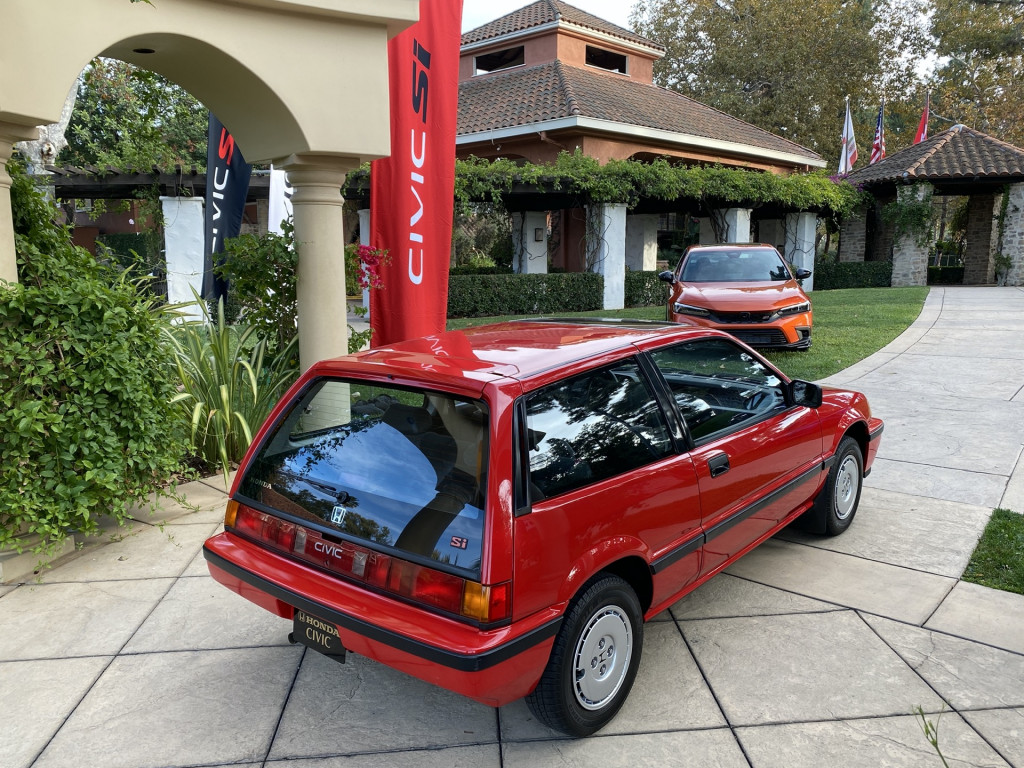
1986 Honda Civic Si, red, and 2022 Honda Civic Si

1986 Honda Civic Si, red, and 2022 Honda Civic Si
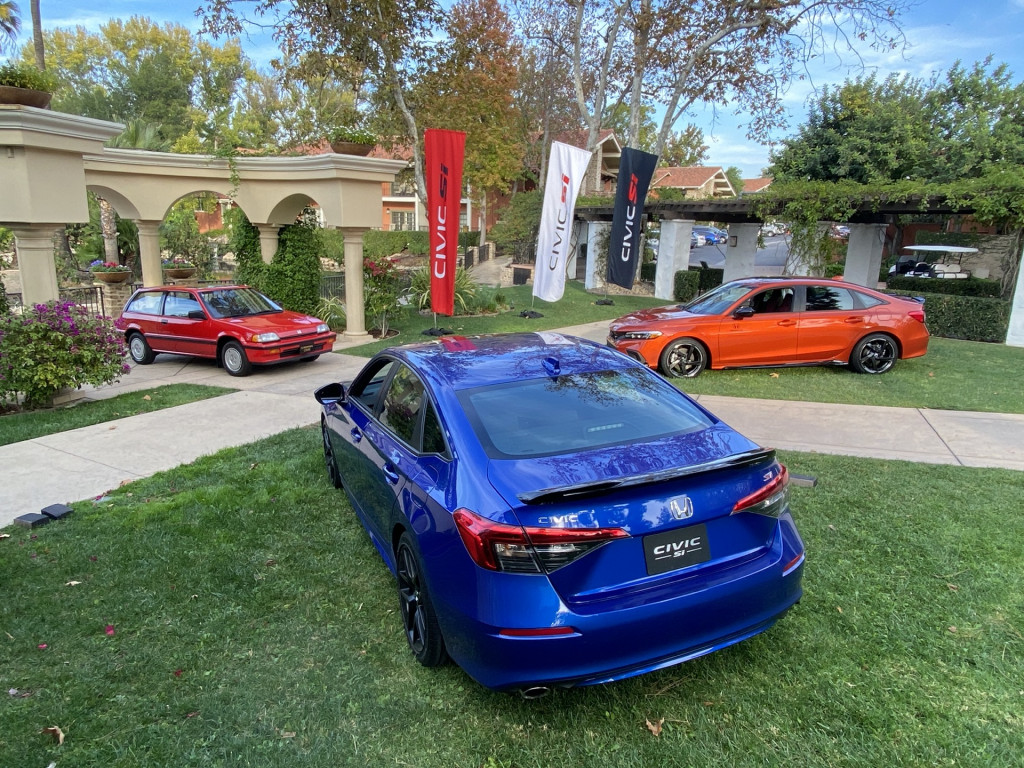
1986 Honda Civic Si, red, and 2022 Honda Civic Si
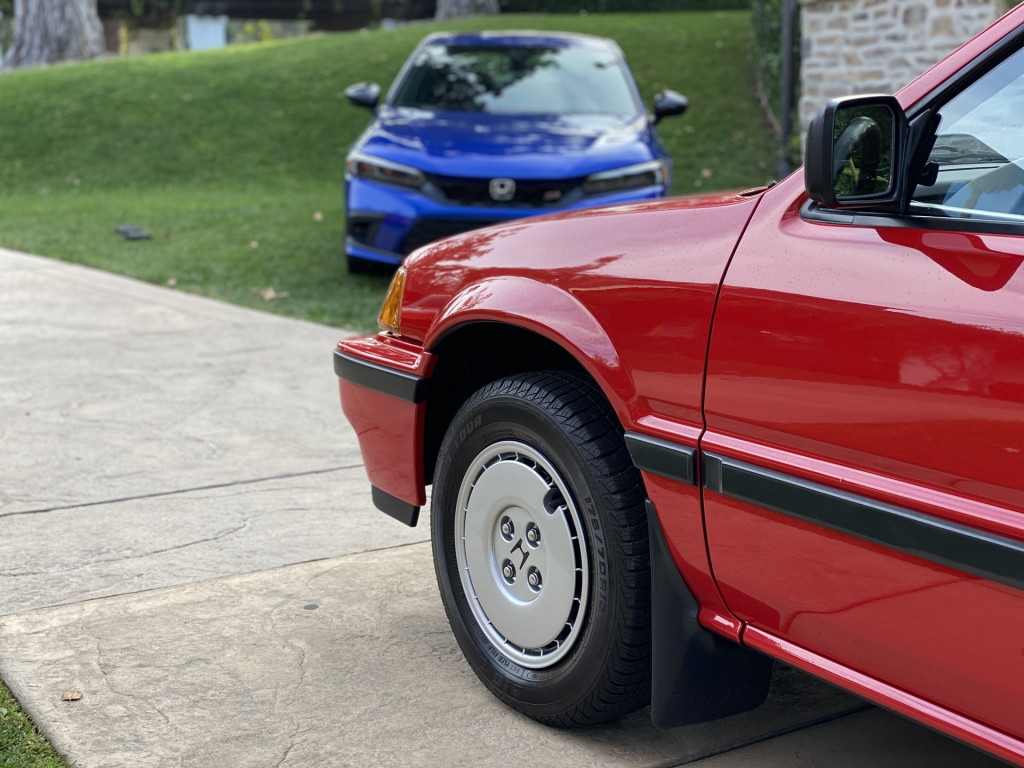
1986 Honda Civic Si, red, and 2022 Honda Civic Si
Beyond the nose, the broad expanse opened up the road ahead so I could see through those California curves, yet quick checks to the side affirmed that I wasn’t about to clip a corner. For this iteration, Honda mounted the side mirrors to the doors and set them lower; a notch in the mirror housing opens up a subtle but significant field of vision when rotating left through hairpins.
Subtle but significant could be the ethos of this Si. The suspension tuning felt as if canyon slaloms were integral to its development. It’s the same MacPherson front strut, multi-link rear suspension as the outgoing model, but different. Compared to the new Civic sedan, Honda bolstered the Si with reinforced upper spring mounts and thicker stabilizer bars, yet it doesn’t have the adaptive dampers of its predecessor. The adaptive dampers weren’t necessary, or even desired, senior product planner Dan Calhoun told me: Many last-gen owners didn’t use Sport mode because it was too firm.

2022 Honda Civic Si in Blazing Orange, and 2021 Honda Civic Si in Lunar Silver Metallic
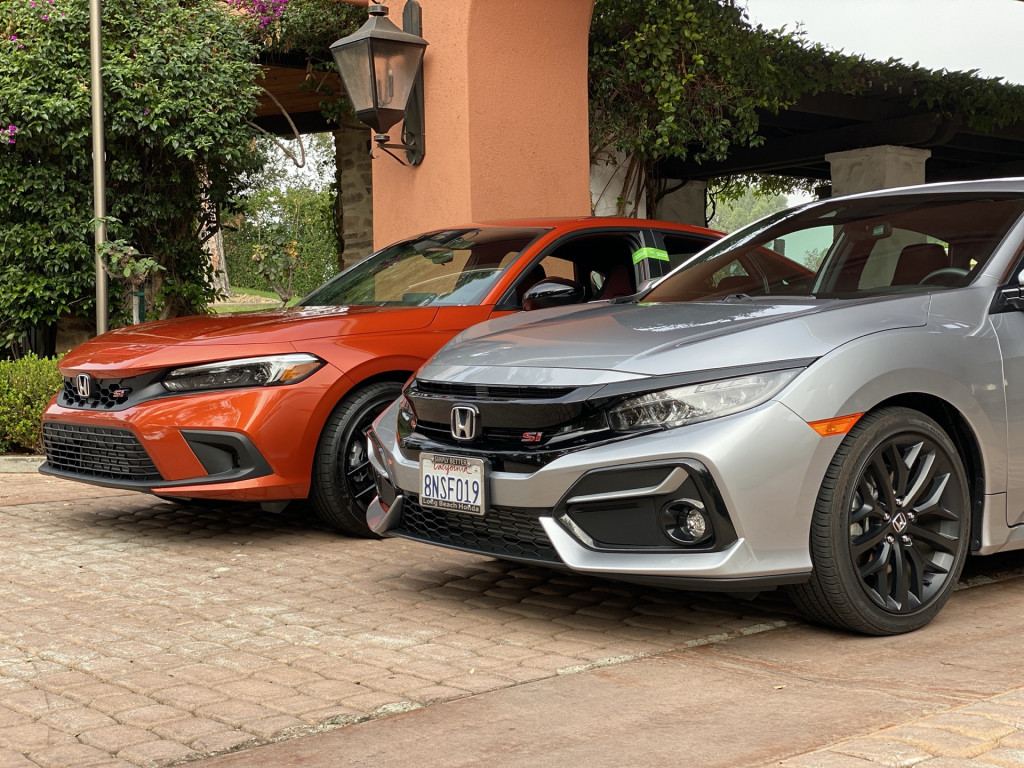
2022 Honda Civic Si in Blazing Orange, and 2021 Honda Civic Si in Lunar Silver Metallic

2022 Honda Civic Si in Blazing Orange, and 2021 Honda Civic Si in Lunar Silver Metallic

2022 Honda Civic Si in Blazing Orange, and 2021 Honda Civic Si in Lunar Silver Metallic
In back-to-back testing with the outgoing Si on that initial canyon climb, the new Si held the road better over undulating pavement, with less lateral movement and an overall more balanced, composed ride. Blind curves around slabs of rock that dusted the road with debris felt less perilous. At highway speeds, it seemed calmer, though firm enough to make me conscious of the heavily bolstered sport buckets with integrated headrests. At turn in, the old model plowed more with the front tires scrabbling for grip.
A half-inch wider track helped traction, as did the 18-inch summer tires (same size as the all-seasons at 235/40R18). A note about those tires: A set of Goodyear Eagle F1 summer tires is once again the only option on the Civic Si, and for $200, it’s well worth it.
2022 Honda Civic Si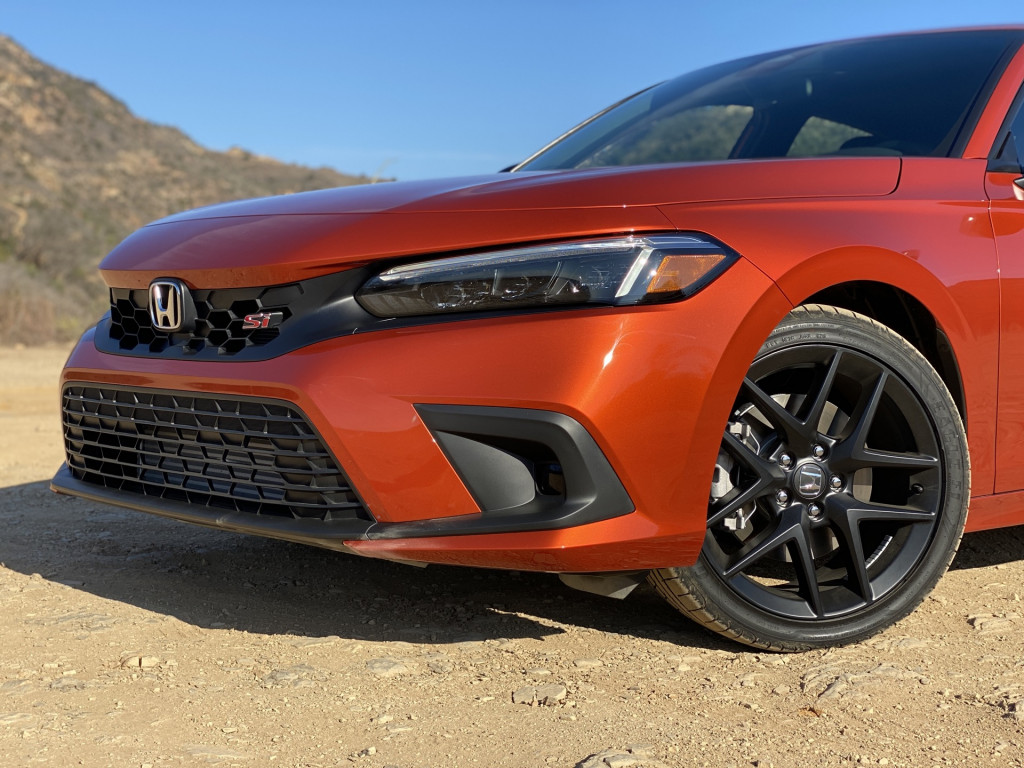
Honda added a third drive mode to Normal and Sport with an Individual setting that lets you change engine response and steering feel. It’s hard to tell the difference, though the steering as a whole felt slightly heavier than the outgoing model in back-to-back testing. The electric-assist steering response was most appreciated on downhill cuts, where maintaining the line and avoiding the drop offs was crucial. The steering offered more feel, thanks in part to a stiffer torsion bar connecting the shaft and rack pinion gear.
Changes to the manual transmission were less of an improvement. The shift gate felt notchier even though the throws were 10% shorter than the Si’s predecessor. Honda was going for a Type-R-like click feel when rowing your own but I’m not convinced it’s an improvement. The rev matching feature is hidden under a Vehicle Settings screen in the 9.0-inch touchscreen and the parking brake must be on to activate it; set it before hitting the road to maintain power going in and coming out of the bends. The clutch pedal uptake is perfect, however, neither too firm nor too soft, and not too long or too short. It was just right, like a good bowl of porridge.

2022 Honda Civic Si
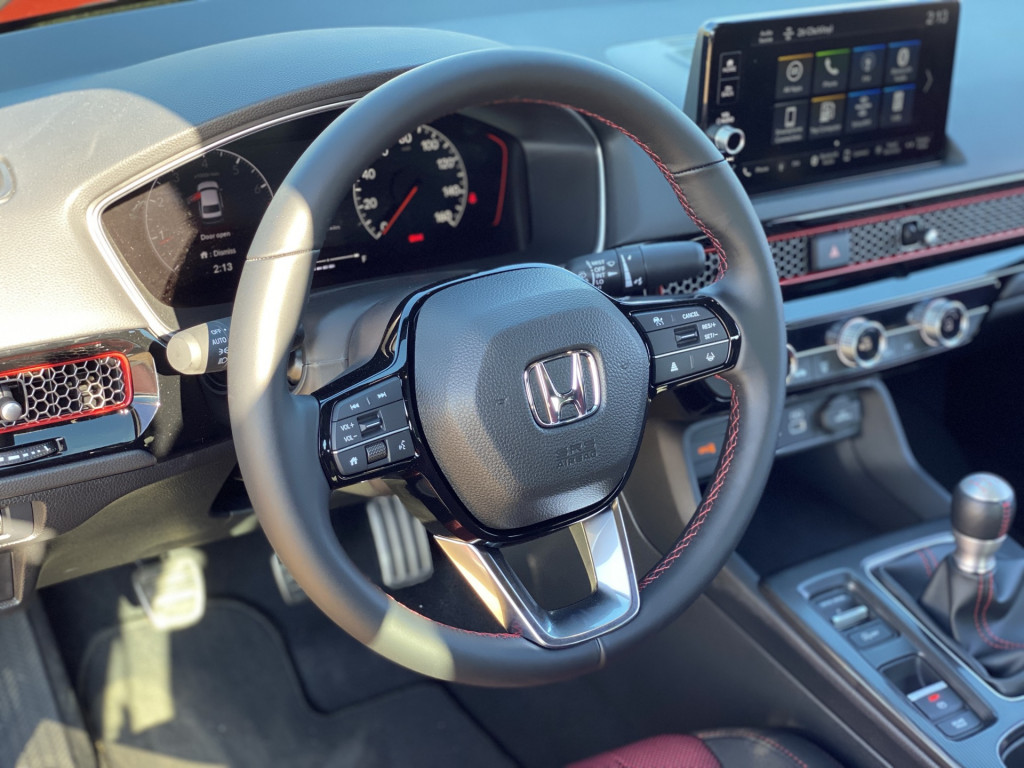
2022 Honda Civic Si
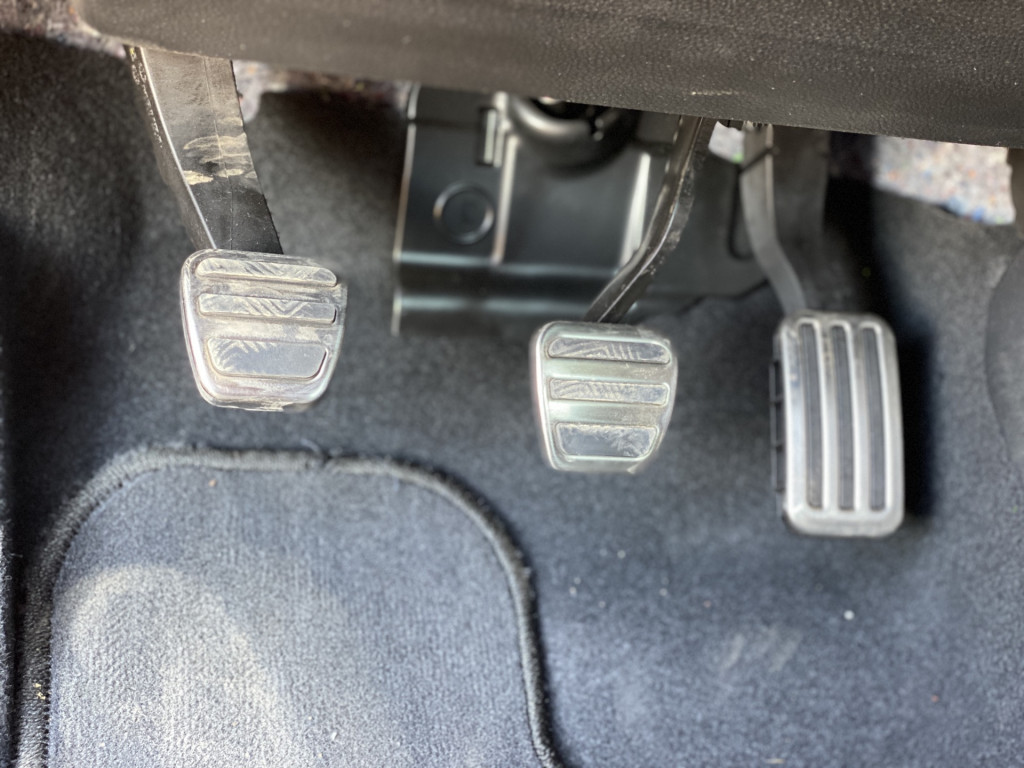
2022 Honda Civic Si
The Si’s engine is also the same but different, the changes subtle but significant. The 1.5-liter turbo-4 returns and it makes the same 200 hp and 192 lb-ft of torque. It’s good for a 0-60 mph time of less than seven seconds, and the throttle feels more sensitive, so there’s no need to mash the pedal like in the old model. The torque peak arrives earlier at 1,800 rpm (from 2,100 rpm in the old model), and the broader power band limits the need to downshift coming out of a turn because the power is often already there. The most significant change comes from a single-mass flywheel replacing the heavier dual-mass unit in the outgoing model; it makes the Si jumpier off the line and quicker to rev. The Si is not slow, it’s not quick, but it might be just right for a starter sports car ($28,515 including $1,015 destination charge).
A racetrack with long open stretches might mute the improvements to the Si. But on winding roads twisting through canyons and dropping off at the Pacific Ocean, the Si felt just right.
Honda paid for airfare and lodging for Motor Authority to bring you this firsthand report.
